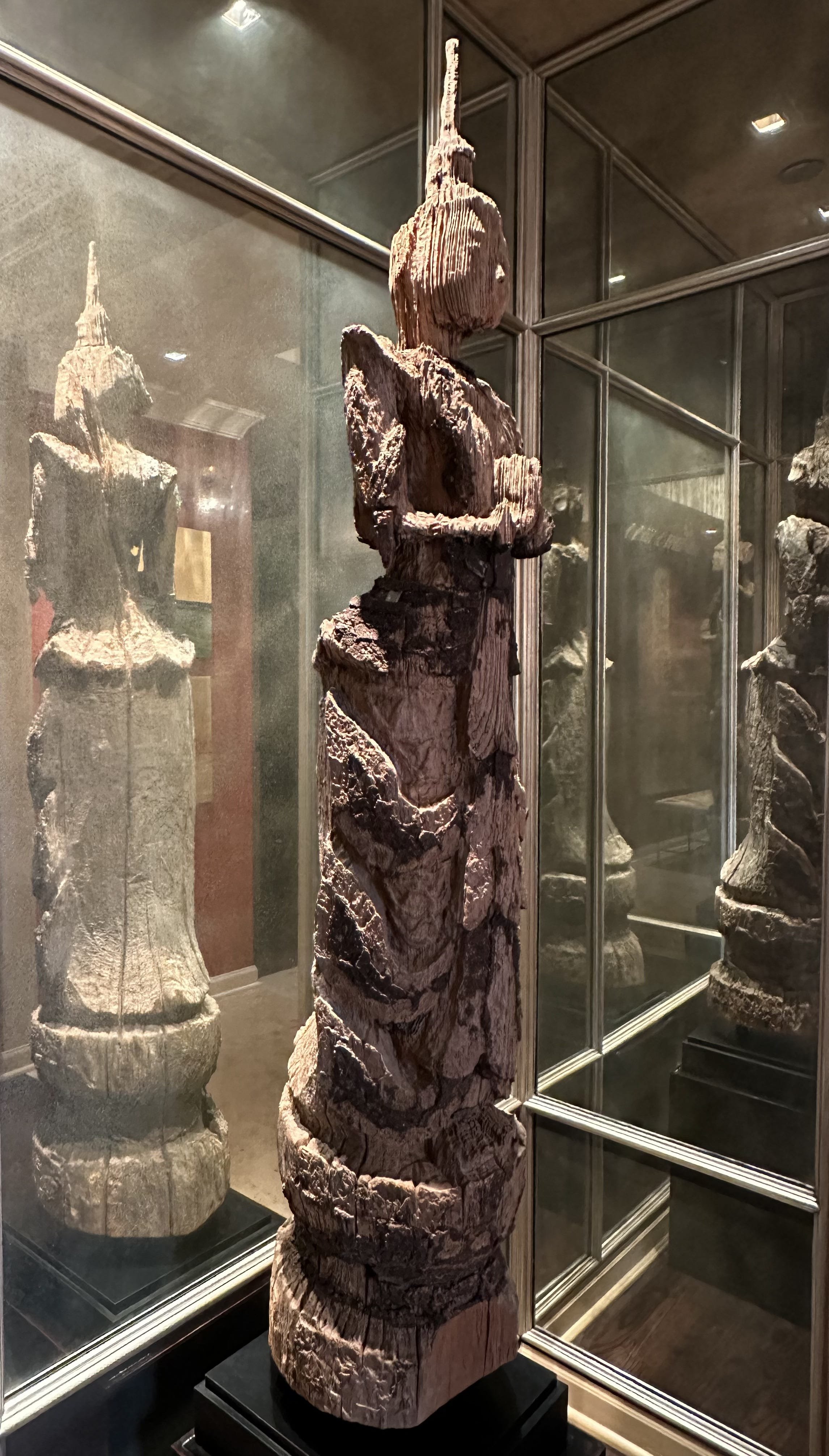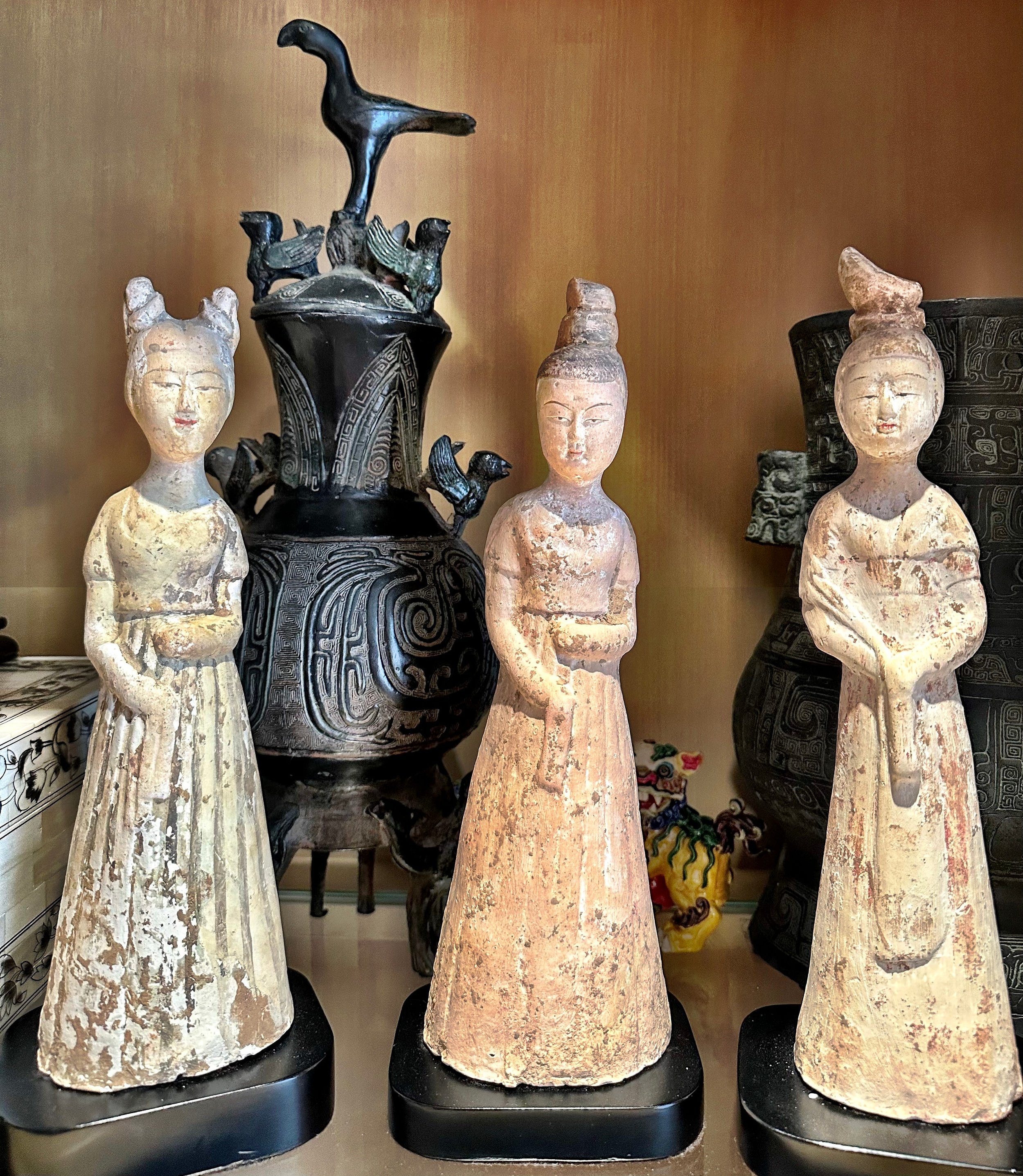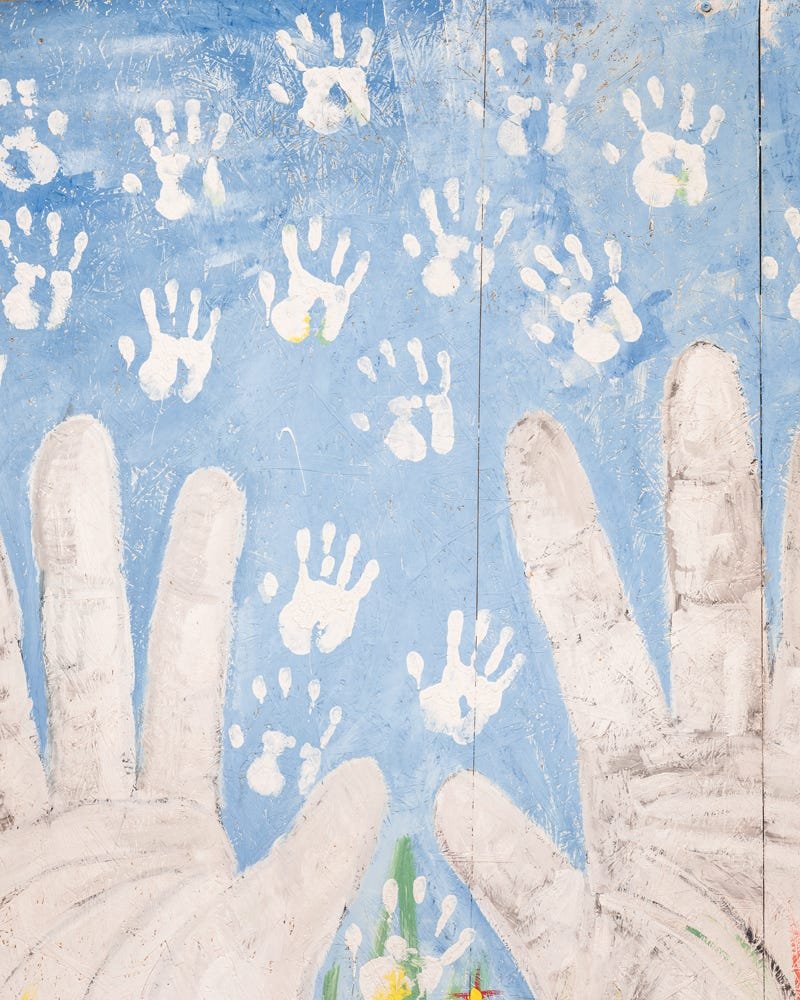The Triangle of Engagement.
Photography by Karl Taylor
Since the beginning of 2023, I have had the opportunity to either deliver a keynote talk with questions and answers, run an interactive workshop, or moderate discussions at senior executive off-sites with 11 different companies.
The companies have ranged in size from less than 100 to over 100,000 employees and have spanned categories as diverse as food and beverages, media and entertainment, finance, technology, academia, and healthcare.
While much of the content has focused on the future, managing change, leading in these times, and learning to remain relevant, in almost all these sessions a new topic of concern, challenge and uncertainty has arisen regarding employee engagement.
How does one engage with teams and with colleagues in meaningful ways in a world of distributed and unbundled work, rapid acceleration of the speed of work, increasing burnout, and a workplace with four different generations each with different mindsets and expectations?
Photography by Karl Taylor
The Triangle of Engagement.
Engagement within and across teams, offices and expertise groups have always been a key to culture.
The ability to 1) collaborate, 2) feel connected and 3) learn/grow are three of the four keys to Culture in addition to 4) a commitment to excellence and all of these three require teams to be engaged with each other and the work.
Over the month as the question of engagement arose again and again in different ways during my sessions and I attempted to guide, extract, and build from the talented individuals whom I was interacting with, it became clear that one way to re-enforce both individual and team engagement is through a Triangle of Engagement.
This triangle consists of three behaviors which in combination boost engagement.
The three sides of the triangle are
Curiosity
Empathy
Generosity
Curiosity
One simple way to get people engaged is to ask about them and by doing so also get them curious about others.
If someone asks you questions about yourself that are not tricky or puts you in a vulnerable place it is very likely that you will be engaged.
One simple question that few people ask but significantly boosts the ability to connect is this one:
What three decisions or events have made or shaped who you are? (These really two different questions depending on whether you chose events or decisions)
This makes the person who you are asking the question to have to think a bit and in that way is difficult.
However, there is no right or wrong answer and everyone can come up with an answer, so no one is on the spot.
Their answer helps build a conversation because the person who is asked the question may then ask the questioner for their answer to the same question.
Try it on yourself and people you wish to engage with.
Photography by Karl Taylor
Empathy
Today a mixture of polarization, generational differences, work pressure and speed give us very little time to figure out what we are doing, let alone getting to see people from their perspectives and understand where they are coming from.
But to engage one needs to be empathetic and often part of being empathetic is to understand both you and everyone around you are also vulnerable regardless of projections of strength and power.
Asking others about the events and decisions that made them which is being curious about them is one way to generate empathy.
Answering the same question if they ask you to so builds empathy further.
In addition, a simple question can let you be more empathetic.
How can I be of help to you?
A very simple question that few people ask.
People find it hard to ask for help (though we all should) but we should find it easier to ask people how we could help them.
This question can be refined in many ways to better telegraph understanding of a situation or elicit a particular type of answer.
For instance.
How can I help you more to manage X (X might be a client, an employee, a situation) which signals you understand the situation and ensure that you can provide the help.
How can I do things differently in the way I work or manage to help you become more effective? This signals empathy by understanding that sometimes helping someone is not changing what they do but what you do.
Photography by Karl Taylor
Generosity
Whenever you give someone a non-monetary gift of time, kindness, help, or a monetary reward of a special bonus or one time award which is unexpected and goes above and beyond they will be deeply engaged.
Give first.
Give more than you get.
Give without strings.
And you will find that you will get attention, time and much more at a multiple of what you give.
In a world of transactions and negotiations try not being transactional or a negotiator.
Today people get taken aback when people help people with no strings attached.
When one is generous there are two amazing rewards:
First one earns goodwill which lasts a long time.
Second one feels good about oneself.
Photography by Karl Taylor
Why the Triangle of Engagement may work for you and your company.
Clearly engagement is a challenge and there are multiple ways one needs to address it but this method is one that can be part of the solution and works because:
It is easy to do since it involves asking questions or paying attention and can be done by anyone at any level and by managers.
It does not cost anything (if generosity is time or attention) or costs little (one time reward or bonus).
It works regardless of type and size of company, mix of talent, in-person or over Zoom.
It does not require your manager to approve so you can do it today.
It is contagious in that when you ask the questions or behave with generosity others ask the questions and think generously.
The Four Shifts: Thriving in the Next Era.
Photography by Rishad Tobaccowala
This is the third of a series on The Four Shifts that are revolutionizing every aspect of society and business.
Technology Shifts: AI, 5G, Biotech and Blockchain.
Power Shifts: From Center to Edge. From Institution to Individual. Consolidated to Fragmented.
Boundary Shifts: Office/Home boundaries. Blurring of behaviors. Mongrelized and Multi-Dimensional Companies.
Mind Shifts: Generational Differences. Re-evaluation of Work and other institutions.
The first of the Series which describes each of these shifts can be read here.
The second of the Series which discusses some of the implications on Government, Education and Business can be read here.
This the third and the last of the series shares some thoughts on how individuals and teams can thrive in a rapidly shape shifting world by controlling what we can and aligning with the Force.
It is to build and hire for the Six C’s and hone, architect and sculpt our attitudes and mindsets with the Five P’s.
Photography by Rishad Tobaccowala
The Six C’s
Six key skills will be essential in the future to complement computers, co-exist with change, and ensure continuous re-invention.
Three of these have to do with individual competence (Cognition, Creativity, Curiosity) and three how we connect with each other and the world outside our minds (Collaborate, Communicate, Convince).
Very few people will be world class in all six areas, but we all need to grow to be very good in at least two in each area.
Many companies hire or tolerate unbalanced people who are ultra-strong in individual skills such as cognition and creativity but are terrible at collaborating or communicating and learn that these lop-sided folks almost never ever last.
Being great at collaborating and communicating but being lack luster in cognitive or creative and other skills also flames out as these folks do not earn credibility of insiders or clients. Similarly, brilliance without some basic people and communication skills always ends up poisoning cultures and eventually flaming out because the organization rejects these “smart porcupines”
Photography by Rishad Tobaccowala
The 3 Cs of Individual Competence
Cognition. Curiosity. Creativity.
Cognition is simply learning to think and keeping your mental operating system constantly upgraded. This requires deliberate practice and sustained work. Improved cognition is achievable.
But one must work at it and many of us are so swamped with keeping up with our daily workload that we do not invest in growing our skills and expertise. This proves to eventually lead to irrelevance as the needs for yesterday’s skill sets erode and one has not replaced them with a new set of skills for the future.
If we cannot upgrade our mental operating systems we will become less relevant.
Creativity is connecting dots in new ways, looking beyond the obvious and this skill will be key as AI powered computers, data crunch and co-relate faster than we ever will.
To be human is to be creative.
Creativity is at its heart the way we deal with a world of change by adapting, evolving, and re-inventing.
We need to learn and feed this inside us. The future will be about data driven storytelling and not just data or storytelling and the ability to leverage modern machines and algorithms to unleash connection and meaning will depend on creativity.
Curiosity is simply being alive to possibilities, questioning the status quo and asking what if? Today the key competitor or opportunity in any category comes from outside it.
Curiosity may have killed the cat, but the lack of curiosity killed the careers of many people. When boundaries between industries shift and our minds are like champagne corks swelling and no longer fitting into the past the key is not to accept but question the status quo.
AI co-relates and connect dots and look back but rarely anticipates forward and what is next. Humans ask why? as well as why not?
Photography by Rishad Tobaccowala
The 3C’s of Connecting
Being cognitively gifted, creative, and curious will not be enough since we are living in a connected world where eco-systems, teams and linkages is how ideas are born, value created, and long-term careers forged. For these we need to hone and build and train for three other skills.
Collaborate: Collaboration is key to work in a world where API’s (Application Protocol Interfaces) are not just about handshakes between software/hardware but between individuals with different skills, teams in different countries, partners, suppliers and much more.
As the world re-imagines and re-configures itself we need to be like Lego pieces and learn to fit and connect and combine with others to transform ourselves and our companies.
Communicate: Learn to write. Learn to speak. Learn to present. It may be so old school but watch the people who succeed, and they are good at communication. And all of these can be taught and learned.
But communication is not a one-way street and as important as it to write, speak and present it is as critical to be able to listen, to hear and to understand what others are saying with an open mind and a sense of empathy.
Convince: Every one of us is a salesperson regardless of what we believe our title is. This is true even if we do not sell anything at work. We must convince colleagues of our points of view.
We all must learn to convince and learn to sell.
Humans choose with their hearts and use numbers to justify what they did.
Humans are stories. Stories are data with a soul.
Convincing is often a soup of facts and stories.
Photography by Rishad Tobaccowala
The Five P’s
To thrive individuals and companies will need purpose, perspective, perceptiveness, pioneering, and persistence.
Purpose: Sooner or later those who succeed have a sense of where they are trying to go and some clear goals.
A star to steer by and outcomes to measure progress against.
If one does not know where one is trying to go it is unlikely one can get there.
Today in a world that is accelerating, changing and overwhelming with stimuli, data and news this is key or one is just tossed and turned by the latest blast of news and information.
In time this purpose or these purposes get chiseled into one’s individual DNA or the fabric and culture of successful individuals and companies.
When a company is successful it is often seen as driven by a purpose, it has teams built with individuals passionately aligned against a common outcome.
The passion many equate with those who succeed are usually driven by a focus and ferociousness of purpose.
Perspective: With time and experience comes a sense of perspective.
An understanding that the world does not revolve around oneself which allows one to become more empathetic, generous and invest in relationships.
A sense of perspective also brings with it the realization that life and career while in one way are short in other ways span decades and will bring a tangle of good and bad, ups and downs. To succeed one needs to grimace and march on in the bad times while not losing all sense of proportion and propriety when the force appears to be with us.
Machines do not yet have perspective. Their memory is not our memory. Everyone is a compilation of where they have been and what they have experienced and mining and learning from this history is key.
Perspective is also important to companies, so they see where they fit in their eco-systems and can determine both who to partner with but also to visualize their category broadly enough to see opportunities and threats outside a narrow slice of geography, time, or market.
Successful people and firms also put things in perspective when explaining and making their case. They place things in historical or other frameworks to build convincing stories.
Perceptiveness: The Cambridge dictionary defines someone who is perceptive as one who is “very good at noticing and understanding things that many people do not notice”.
This noticing and understanding can be about being emphatic in how one deals with people or seeing a niche or hiccup in a process that many may miss or to be self-aware of one’s weaknesses and mental models.
Perception will be key to ensure our relevance in a world of AI, diverse and globalized marketplace and generational differences in attitudes and behaviors.
Perception can be honed and grown and will be a key for success as it will be what helps differentiate carbon based analog feeling individuals from increasingly powerful silicon based digital computing machines.
Our perception and their power and precision will be what will drive profitable results.their roots tie them down but rather use roots to feed their wings to fly to the future. These innovations can be across a range of a company’s system from supply chain to logistics to customer service to pricing to engineering breakthroughs to re-thinking their business.
Pioneering: Long lasting firms and successful individuals innovate, invent and are idea driven. They do not let their roots tie them down but rather use roots to feed their wings to fly to the future. These innovations can be across a range of a company’s system from supply chain to logistics to customer service to pricing to engineering breakthroughs to re-thinking their business.
To succeed as an individual eventually everyone needs to become who they are.
We need to find our voice and superpower and each of us in doing so pioneer by becoming special and differentiated in our own way.
Defining oneself is an act of pioneering.
Switching jobs, cities and goals are all acts of taking a different path and trading the known for the unknown.
In a world that will be shifting around us we need to be able to re-invent our boundaries.
Living is an act of constant resurrection and re-invention.
We are all capable of being pioneers.
Persistence: Part of persistence is continued practice.
Practice of a craft, a skill, an art.
A portion of it is patience and recognizing that the reaction to a thing is what will determine how the thing affects us and often not reacting but instead waiting is the most prudent thing to do.
A lot of persistence is recognizing that it is in the everyday doing, the everyday improvements, the everyday re-invention, and repair after setbacks that forge us in the foundry and furnace of industry and life.
It is sculpting each block of stone and placing them together that builds the cathedral.
Day by day.
Year by year.
The power of compounding skills, relationships, and returns.
How every “overnight” success comes to be…
The Four Shifts: Implications
Photography by Uwe Langmann
This is the second of a series on The Four Shifts that are revolutionizing every aspect of society and business.
1. Technology Shifts: AI, 5G, Biotech and Blockchain.
2. Power Shifts: From Center to Edge. From Institution to Individual. Consolidated to Fragmented.
3. Boundary Shifts: Office/Home boundaries. Blurring of behaviors. Mongrelized and Multi-Dimensional Companies.
4. Mind Shifts: Generational Differences. Re-evaluation of Work and other institutions.
The first of the Series which describes each of these shifts can be read here.
This second post discusses just some of the implications on Government, Education and Business.
Photography by Uwe Langmann
Government: New Models of Governance Emerge.
Most institutions at the national and international level were designed over five decades ago post World-War 2.
Today, two countries, India, and China, with nearly 3 billion people account for over 1 in 3 citizens of the world. And by the end of the decade Africa will contain 40 percent of the World’s people.
If you fly globally, you will find yourself landing and taking off in the middle of the night in many Asian and African countries because landings and take-offs have been optimized for United States and European travelers since these arrangements were written when air travel was primarily western which is no longer true.
The Internet reshapes borders in its own way and creates amazing opportunities and wealth as well as significant legal challenges when companies and the Internet are global, and laws are local. A company like Google has nearly 1000 in house lawyers and multiple outside legal firms since it and other companies like Meta have become a form of government and impact business and society everywhere. Current discussion on how to ensure Chinese ownership of TikTok is not leveraged against the West is an indicator of how the Internet is re-writing the rules.
It is not just the rise of the East and the Internet that is roiling governance but also modern healthcare and gene therapy. As modern medicine can extend the quantity of life but not the quality of life many want new rules on deciding when to exit. With every major country aging fast, this is just one of the issues we will grapple with.
The future will not fit in the organizations and governance of the past where we need to grapple with AI Ethics, Climate Change, Gene Technology, Data Privacy, an African-Asian future, and Space Junk/Wars and much more. We needed new rules for an Industrial Age since the rules of an Agricultural Age were no longer relevant. Similarly, the legal and institutional frameworks of the past cannot get us into the future.
In time this might give rise to what Balaji Srinivasan has named The Network State. The book asks that while Technology has enabled us to start new companies, new communities, and new currencies can we use it to start new cities, or even new countries? This book introduces the concept of the network state: a country you can start from your computer, a state that recruits like a startup, a nation built from the internet rather than disrupted by it.
Photography by Uwe Langmann
Education: A Revolution is required.
Five shocks have descended on Education in the past decade driven by The Four Shifts.
1)Covid-19 made some parents question what they were paying for, and it also deeply set back learning in many places particularly public schools which are now losing significant students and funding.
2) College Debt has become an anchor for millions and a hot political issue.
3) Alternate Credentials: New certification programs from companies like Google for software and other developers are now available to individuals who no longer need advanced degrees to get a job at these companies.
4) Politicization of Campuses and Schools: From masks to whether certain speakers have the right to address campus have changed the world of education often turbocharged by social media. The University of Chicago has issued The Chicago Statement which emphasizes that free speech and thinking are key to an education and now nearly 100 universities have adopted this perspective.
5) Technology: In a world of Search and now ChatGPT with more advances coming down the line the key issue that is arising is not how one teaches but what one teaches.
We are living in a world where technology is putting a premium on ability. Without an education geared to ensure that we learn to work with and alongside modern technology society will face great challenges.
Educators need to be educated about how to educate.
And most importantly in a world of change education needs to be continuous and not something done early in one’s career. The half-life of most learning is decaying quickly, and education infrastructure developed to be a luxury good that teaches irrelevant things at the wrong times to too few people is ready for a revolution.
Education will be the key differentiator between how countries and individuals prosper, and we will see not just governments, but businesses and many others re-imagine and re-think the core competency of learning.
Photography by Uwe Langmann
Business.
Companies are the ground zero where the four shifts are creating seismic change.
Five forces that few leaders had to deal with a decade ago are now critical to manage and lead.
1.Re-Thinking Business Models: Globalization, demographic change, technology is shortening how long a company succeeds. Companies today remain in the Fortune 500 for less and less time. The threats to any company tend to now come from outside its competitive set. Newspapers were undone by Google. Auto companies challenged by Tesla and Uber. Kodak by Instagram.
The ability to re-imagine and re-cast a business becomes job one among leaders and the ability to shape shift becomes critical for talent. The need for re-thinking business models has risen in importance due to the rise of distributed and unbundled work which is not only allowing companies to hire from anywhere but plug and play with a plethora of cloud and other based marketplaces and talent pools. This week’s story in the Economist Magazine on the “fuzzy corporation” reveals that distributed unbundled work is accelerating the boundary shifting of where and what a company is.
2. Talent Management: Power increasingly is moving to talent. Technology, distributed work, declining working age populations, new mindsets and expectations are focusing companies on the reality that they work for talent as much as talent works for them.
Purpose, Values, Connections, Freedom, Story, and Growth are significant factors today in attracting talent and managing cultures and it is not just Money, Fame, and Power.
As companies re-imagine what they do they are also re-imagining how they work.
One of the most dramatic upcoming shifts is the increased emphasis on becoming educators and sources of upgrading skills for the future which companies are investing in because the formal education systems are not turning out the skills they need or not providing the flexibility to augment the workplace versus having employees pause work to upskill. Enhancing talents’ mental and skill operating systems is now a key source of competitive advantage.
3. Government Relations: Whether it is ESG (Environment, Social, Governance) or DEI (Diversity, Equity, and Inclusion) or lobbying every business is intertwined with politics whether they want to or not. This is for a multiple number of reasons from Financial Institutions like Black Rock calling for ESG (and others attacking this as green washing or “‘Woke”), employees looking for management to take a stand (e.g., Disney), or the Four Shifts changing legislation and rules and the rise of Union power (e.g., Starbucks)
The Four Shifts are changing the rules of the game and Government makes the rules of the game.
Increasingly the Governance in ESG is not just internal governance but working with Government.
4. Technology Expertise: Every company is a technology company. As the current downturn sees talent reduced at the big Tech companies, they are rapidly being hired by the Walmart’s and State Farms of the world. The power of a Chief Technology, Chief Platform, Chief Data and Chief Growth Officer (almost all new titles) have grown significantly as the DNA of companies now beat to metronome of AI and Networks and Chips.
5. Open and Connected: The Four Shifts have put a premium on openness and connectedness in the mindset and working styles of companies. Microsoft’s resurgence under Satya Nadella was driving by becoming a cloud based, Linux aligned and partnering oriented organization.
Companies like Procter and Gamble and others adopt open innovation.
We are living in a connected world of diverse people, new technologies and increased acceleration. Being able to partner, being open to different perspectives and mindsets is one-way companies will bend and morph versus crack and break under the Tsunami of change.
Recently even China has realized that it’s economy and society cannot live isolated.
The Four Shifts: An Overview
Art by Damien Hirst
This is the first of a series on The Four Shifts already underway that will revolutionize every aspect of society and business.
1. Technology Shifts.
2. Power Shifts.
3. Boundary Shifts.
4. Mind Shifts.
Art by Damien Hirst
Technology Shifts.
Today a series of revolutionary technologies have all reached a critical momentum.
Each one interacts with the other creating exponential advances.
a) Artificial Intelligence: Over the past decade AI has been progressing at a rapid pace doubling its capability every 10 to 14 months. One flavor of AI, Regenerative AI, as illustrated by Chat GPT and Dall-E-2 has seized the imagination and indicate the revolutionary potential of these technologies.
b) Gene Therapy: Building on a detailed understanding of the human genome and leveraging modern computational power and AI we have already seen the first break through drugs in the BioNTech and Moderna MRNA vaccines.
c) 5G: The smart phone and continuous connectivity have re-configured business and consumer behavior this past decade. Two aspects of 5G in 200X faster speeds and almost zero latency to less than 1 nano second will turbo charge this impact. Remote surgery and ultra-small devices connected at blazing speeds to computation in the cloud will enable a range of new devices and behaviors.
d) Blockchain: While tarnished by the crash of crypto and the Ponzi like nature of many projects the underlying mathematics and potential of the Blockchain continues to be invested in not just by Silicon Valley but all the major banks and many large companies.
These are just four of the key technologies that have advanced dramatically over the past few years both independently from and intertwined with each other.
Art by Damien Hirst
Power Shifts.
Driven in part by technology and in part by demographics, power is moving from the center to the edge in three significant ways.
a) From the West to the East: Earlier this week I was in India for the first time in 3 years and on a drive from Thane (about 30 miles from Bombay) to the city reminded me of being in Shanghai a decade or more ago. Infrastructure everywhere. Temples were optimized for digital donations. Food delivery was not just fast but inter-city. Almost every friend wished they were 30 years old again. The optimism and momentum were infectious.
The same feeling was felt on trips to Singapore and other parts of Asia. China while challenged is going to continue to rise. And even as companies re-allocate resources out of China, they still have significant presence there and much of the re-allocation is to India, Vietnam, and other Asian countries. Companies like Starbucks see China as a key to their future.
Africa is the only continent whose population will increase significantly in the next 25 years from 1.3 billion to nearly 2 billion plus people accounting for 25 percent of the world’s population by 2050 and potentially 40 percent of the world’s population by the end of the decade.
Globalization continues but shifts to a multi-polar globalization with many seats of power and impact such as China and India today and Nigeria and other countries tomorrow.
b) From Institutions to Individuals: Technology and individual agility is moving power from institutions to individuals. In every industry we see empowered customers and consumers armed with data, technology, and networks (Blockchain and AI technologies will exponentially empower individuals and smaller firms in most cases).
c) From Consolidated to Fragmented: We may have seen peak returns to scale in many industries. While scale continues to matter greatly the top 2 or 3 leaders in every industry appear to be losing share to several upstarts serving a range of different needs. Moats like a social graph did not prevent TikTok from impacting Facebook. ChatGPT may enable Bing to gain share over Google. One of the most interesting things about Search Engine Marketing is that it works because Search does not work well enough. If you got what you were looking for would you click around trying to find the answer?
Art by Damien Hirst
Boundary Shifts.
The future does not fit in the containers of the past. Technology and globalization are like hydrochloric acid. They burn through boundaries. We see digital leakage.
a) The Office/Home Boundary: Two years after a vaccine most downtown offices have 50 percent or less occupancy. Nearly 15 percent of employees have moved 500 miles from where they had worked prior to Covid. Companies are either totally remote or “Hybrid” with 40 percent or so of time being mandated for in person interaction to maximize culture, learning, delivery standards and ideation. Very few service-based companies will ever go back to 2019. And even in-person interaction is often at events, restaurants and offsite with offices themselves being completely re-designed.
b) Blurring of behaviors: If you watch a video on TikTok and click on an ad which has an embedded commerce call to action allowing you to pick up the product from a local Walmart how does one that define this by the old rules of marketing and customer journey? Was it online (TikTok) or offline (Walmart pick up). Was it above the line (a brand ad) or below the line (a sale)? Was it video or mobile or e-commerce or social? People have changed and most companies are organized for a world of clean lines versus blurred lines. Today every point of contact is both a tattoo moment to build a brand and complete a sale.
c) Multi-dimensional companies: For the last couple of days, I was at CES (Consumer Electronics Show) where I had the opportunity to speak to the leadership of many companies to help frame their learning journeys.
Walking around it was so clear that companies were now morphing into multi-dimensional players. Huge signs for Samsung Ads, Netflix Ads, Best Buy Ads, and much more were everywhere. Amazon Ads now had their own location and no longer were bundled with Amazon Web services and the momentum of Walmart Connect was spoken about. What were technology, streaming, retail companies were also now advertising juggernauts combining their first party data, customer knowledge, brand reputations and willingness to partner to create a new multi-dimensional landscape.
Art by Damien Hirst
Mind Shifts.
Human minds are like champagne corks. With new experiences and interactions, they swell and expand. And they no longer fit back into the bottle they emerged from.
During the past 1000 days everybody in the world has gone through a social, health, government, business, and personal crisis because of Covid, rapidly shifting economies and other changes.
This has exposed the fault lines in society and business that existed before 2019 and new technology break throughs and work behaviors have created secondary and tertiary shocks and people are different.
The future does not fit in the mindsets of the past.
a) Generational Mindshift: Recently I completed the first chapter of my new book (will be published globally by McGraw-Hill in 2024) called Re-Thinking Work. The opening chapter begins with a deep dive into the societal changes including the fact that for the first time in modern history four or even five generations will be working together. After completing research on one area which was the generational differences between GenZ/Millennials and GenX/Baby Boomers what was vividly clear is that most businesses are focusing on almost all the wrong things as they try to get their employees re-engaged.
Most boards and political leaders are Boomers and GenX which explains a lot of the rumble in the work jungle and the political world.
b) The Role of Work: Work is important, and people are willing to work hard. “Quiet Quitting” is less about quitting work then quitting bosses. While companies are grappling with where people work most folks are asking Why do they work? Who do they work for? When do they work? And most importantly What is Work?
Next Week: The Implications of The Four Shifts.
What will the implications of the Four Shifts be on individuals, governments, and business as they accelerate, intertwine and morph?
If strategy is “future competitive advantage” how do individuals, leaders and companies ensure relevance and resonance in the coming world.
As Time Goes By.
Happy New Year!
2023 is here and all the years before are receding backward on the timeline. They have left their mark and will continue to impact our tomorrow’s when we least expect it.
For years whenever I came across a good paragraph or phrase, I would copy it down into a notebook.To mark the passing of another year I share a very small selection of the best writing on the topic of “time”.
Time and History
“People are trapped in history and history is trapped in them.”
“Each person’ life is dominated by a central event, which shapes and distorts everything that comes after it and, in retrospect, everything that came before.”
“The past is never dead. It’s not even past”
“The past is a life sentence, a blunt instrument aimed at tomorrow.”
“No one who lives long enough can be surprised to find their biography has been molded by distant events, by other people’s wills, with little or no participation from our own decisions. Those long processes that end up running into our life — sometimes to give it the shove it needed, sometimes to blow to smithereens our most splendid plans — tend to be hidden like subterranean currents, like tiny shifts of tectonic plates, and when the earthquake finally comes we invoke the words we’ve learned to calm ourselves, accident, fluke and sometimes fate.”
Time and Change.
“Now I weigh about 160 pounds. When I left the hospital after being treated for a burst appendix, I weighed 140. When I was nine months pregnant and starving every second, I weighed 210. I have been everything from size 4 to 14. I have been the life of the party and a drag. I have been broke and loaded, clinically depressed and radiantly happy. Spread out over the years, I’m a harem.”
"We will lose everything we love in the end. But why should that matter so much? By definition, we do not live in the end: we live all along the way. The smitten lovers who marvel every day at the miracle of having met each other are right; it is finding that is astonishing. You meet a stranger passing through your town and know within days you will marry her. You lose your job at fifty-five and shock yourself by finding a new calling ten years later. You have a thought and find the words. You face a crisis and find your courage.”
Time and Impermanence
“Fading moments of the now”
“You can’t get attached to the moments she said. They fly away. “
“All of this is made more precious, not less, by its impermanence. No matter what goes missing, the wallet or the father, the lessons are the same. Disappearance reminds us to notice, transience to cherish, fragility to defend. Loss is a kind of external conscience, urging us to make better use of our finite days. As Whitman knew, our brief crossing is best spent attending to all that we see: honoring what we find noble, denouncing what we cannot abide, recognizing that we are inseparably connected to all of it, including what is not yet upon us, including what is already gone. We are here to keep watch, not to keep."
Time and Erosion
“His face was like a mirror, and it was better not to look”
“Only a couple of years had passed in fact. But he looks considerably hammered at by the interval”
“His face was fuller, his center of gravity lower”
“But after all this is America where you can swap out the parts of yourself that do not work”
Time and Living
“Narrative is the strategy of the mind for putting things in relation. You try to get lined up”
“Our need day to day to calibrate, adjust and maintain our equilibrium”
“Let everything happen to you. Beauty and terror. Just keep going. No feeling is final”
“The business of life is the acquisition of memories. That is all there is.”
Sicilian photography by Rishad Tobaccowala






























